2022
Propagation reversal for bistable differential equations on trees
Hupkes, H.J., Jukić, M., Stehlík, P., ©vígler, V.
Abstrakt

We study traveling wave solutions to bistable differential equations on infinite k-ary trees. These graphs generalize the notion of classical square infinite lattices and our results complement those for bistable lattice equations on Z. Using comparison principles and explicit lower and upper solutions, we show that wave-solutions are pinned for small diffusion parameters. Upon increasing the diffusion, the wave starts to travel with non-zero speed, in a direction that depends on the detuning parameter. However, once the diffusion is sufficiently strong, the wave propagates in a single direction up the tree irrespective of the detuning parameter. In particular, our results imply that changes to the diffusion parameter can lead to a reversal of the propagation direction.
preprint
A note on a PDE approach to option pricing under xVA
Baustian, F., Fencl, M., Pospíąil, J, ©vígler, V.
Abstrakt
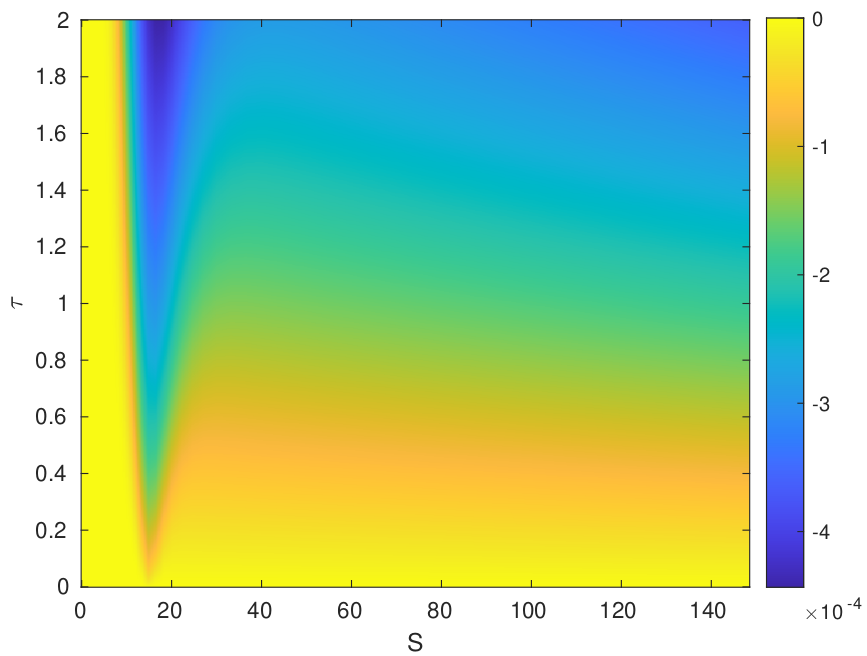
In this paper we study partial differential equations (PDEs) that can be used to model value adjustments. Different value adjustments denoted generally as xVA are nowadays added to the risk-free financial derivative values and the PDE approach allows their easy incorporation. The aim of this paper is to show how to solve the PDE analytically in the Black-Scholes setting to get new semi-closed formulas that we compare to the widely used Monte-Carlo simulations and to the numerical solutions of the PDE. Particular example of collateral taken as the values from the past will be of interest.
Wilmott Magazine , 2022, březen
2021
Bifurcations in Nagumo Equations on Graphs and Fiedler Vectors
Stehlík, P., ©vígler, V., Volek J.
Abstrakt
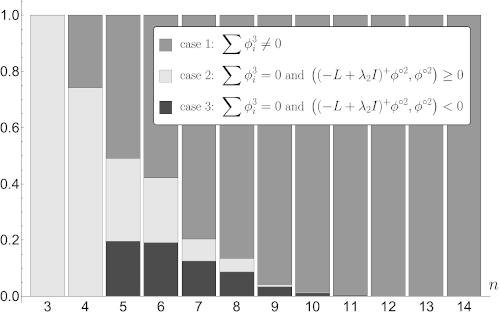
Reaction-diffusion equations serve as a basic framework for numerous dynamic phenomena like pattern formation and travelling waves. Spatially discrete analogues of Nagumo reaction-diffusion equation on lattices and graphs provide insights how these phenomena are strongly influenced by the discrete and continuous spatial structures. Specifically, Nagumo equations on graphs represent rich high dimensional problems which have an exponential number of stationary solutions in the case when the reaction dominates the diffusion. In contrast, for sufficiently strong diffusion there are only three constant stationary solutions. We show that the emergence of the spatially heterogeneous solutions is closely connected to the second eigenvalue of the Laplacian matrix of a graph, the algebraic connectivity. For graphs with simple algebraic connectivity, the exact type of bifurcation of these solutions is implied by the properties of the corresponding eigenvector, the so-called Fiedler vector.
Journal of Dynamics and Differential Equations , 2021
Bistable lattice equations: Symmetry groups of periodic stationary solutions
©vígler, V.
Abstrakt
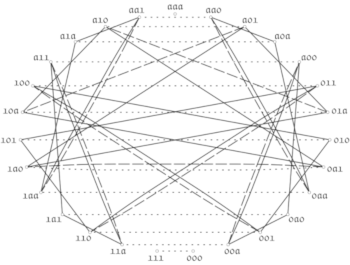
We study spatially periodic stationary solutions of the Nagumo lattice differential equation in a regime with small diffusion intensity. The stationary solutions with a given period can be grouped into classes of equivalent solutions based on symmetries present in the equation. Our aim is to derive counting formulas determining the number of inequivalent solutions. Considering a balanced case, we extend the already known results by including a value permutation -- a symmetry which enables an exchange of the two stable states. The case of stationary solutions with a given primitive period is additionally treated in this setting. To derive the desired formulas, we define groups of symmetries for the solutions and use existing results in the theory of enumeration and derive new ones. Possible applications of the ideas presented here to a wider class of graph structures and dynamics are discussed.
Electronic Journal of Qualitative Theory of Differential Equations, , No. 21, 1-31, 2021
DOI: https://doi.org/10.14232/ejqtde.2021.1.23
Odkazy: arXiv
2019
Counting and ordering periodic stationary solutions of lattice Nagumo equations
Hupkes, H. J., Morelli, L., Stehlík, P., ©vígler, V.
Abstrakt
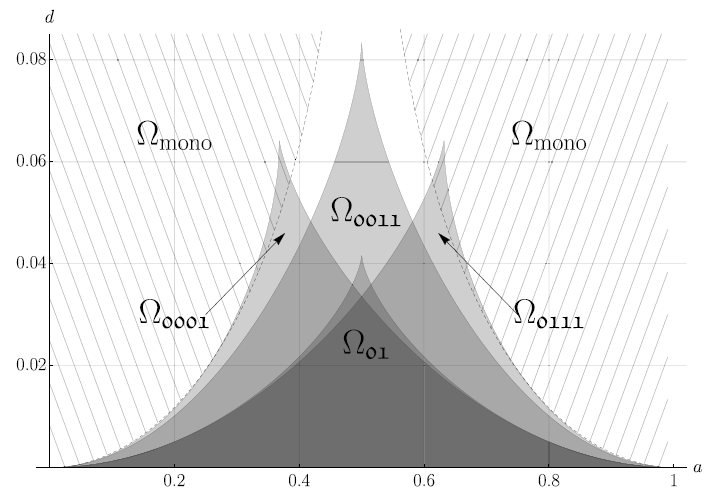
We study the rich structure of periodic stationary solutions of Nagumo reaction diffusion equation on lattices. By exploring the relationship with Nagumo equations on cyclic graphs we are able to divide these periodic solutions into equivalence classes that can be partially ordered and counted. In order to accomplish this, we use combinatorial concepts such as necklaces, bracelets and Lyndon words.
Applied Mathematics Letters, Volume 98, December 2019
DOI: https://doi.org/10.1016/j.aml.2019.06.038
Odkazy: arXiv
Multichromatic travelling waves for lattice Nagumo equations
Hupkes, H. J., Morelli, L., Stehlík, P., ©vígler, V.
Abstrakt
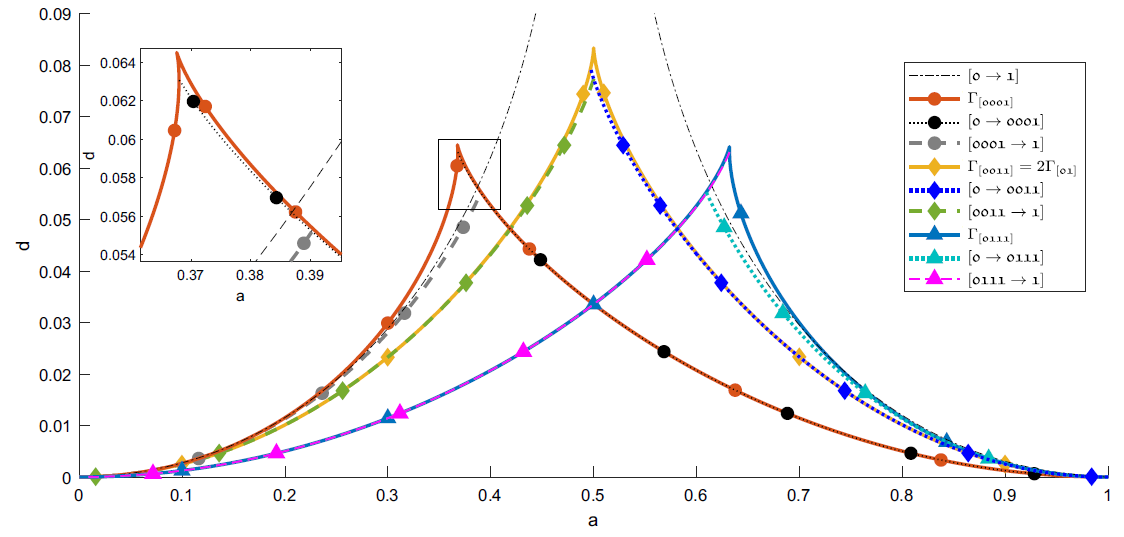
We discuss multichromatic front solutions to the bistable Nagumo lattice differential equation. Such fronts connect the stable spatially homogeneous equilibria with spatially heterogeneous n -periodic equilibria and hence are not monotonic like the standard monochromatic fronts. In contrast to the bichromatic case, our results show that these multichromatic fronts can disappear and reappear as the diffusion coefficient is in- creased. In addition, these multichromatic waves can travel in parameter regimes where the monochromatic fronts are also free to travel. This leads to intricate collision processes where an incoming multichromatic wave can reverse its direction and turn into a monochromatic wave.
Applied Mathematics and Computation, Volume 361, November 2019
DOI: https://doi.org/10.1016/j.amc.2019.05.036
Odkazy: arXiv
2018
On arbitrarily long periodic orbits of evolutionary games on graphs
Epperlein, J., ©vígler, V.
Abstrakt
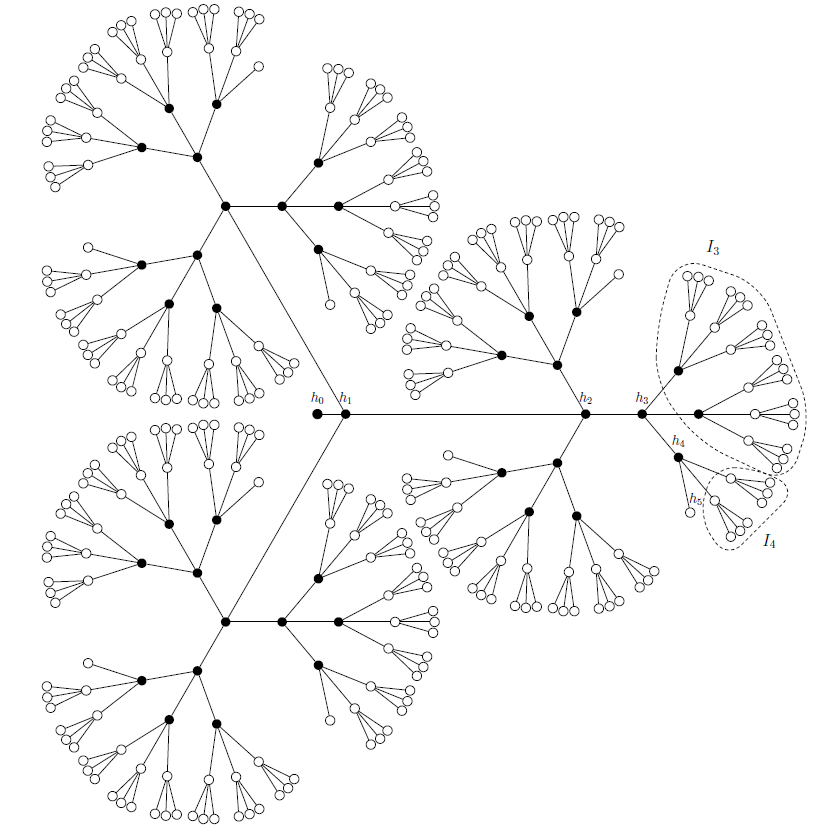
A periodic behavior is a well observed phenomena in biological and economical systems. We show that evolutionary games on graphs with imitation dynamics can display periodic behavior for an arbitrary choice of game theoretical parameters describing social-dilemma games. We construct graphs and corresponding initial conditions whose trajectories are periodic with an arbitrary minimal period length. We also examine a periodic behavior of evolutionary games on graphs with the underlying graph being an acyclic (tree) graph. Astonishingly, even this acyclic structure allows for arbitrary long periodic behavior.
Discrete and Continuous Dynamical Systems, Series B, Volume 23, Number 5, July 2018
DOI: http://dx.doi.org/10.3934/dcdsb.2018187
Odkazy: arXiv
Isogeometric analysis in option pricing
Pospíąil, J., ©vígler, V.
Abstrakt
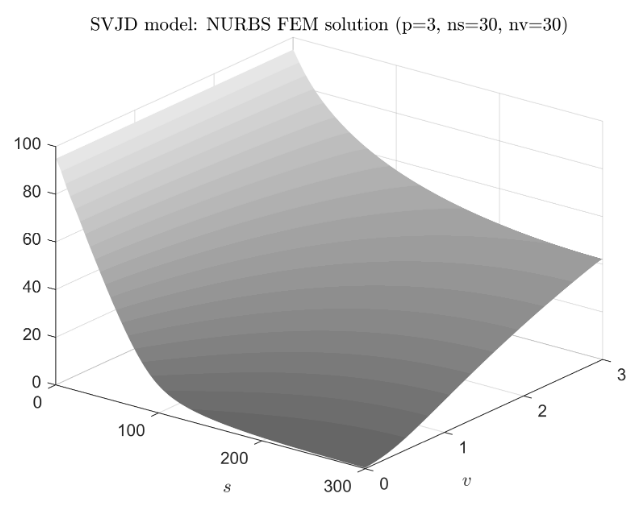
Isogeometric analysis is a recently developed computational approach that integrates finite element analysis directly into design described by non-uniform rational B-splines (NURBS). In this paper we show that price surfaces that occur in option pricing can be easily described by NURBS surfaces. For a class of stochastic volatility models, we develop a methodology for solving corresponding pricing partial integro-differential equations numerically by isogeometric analysis tools and show that a very small number of space discretization steps can be used to obtain sufficiently accurate results. Presented solution by finite element method is especially useful for practitioners dealing with derivatives where closed-form solution is not available.
International Journal of Computer Mathematics, Volume 96, Issue 11, 2018
DOI: https://doi.org/10.1080/00207160.2018.1494826
Odkazy: arXiv
2016
Coexistence equilibria of evolutionary games on graphs under deterministic imitation dynamics
Epperlein, J., Siegmund, S., Stehlík, P. , ©vígler, V.
Abstrakt

Cooperative behaviour is often accompanied by the incentives to defect, i.e., to reap the beneits of others' eforts without own contribution. We provide evidence that cooperation and defection can coexist under very broad conditions in the framework of evolutionary games on graphs under deterministic imitation dynamics. Namely, we show that for all graphs there exist coexistence equilibria for certain game-theoretical parameters. Similarly, for all relevant game-theoretical parameters there exists a graph yielding coexistence equilibria. Our proofs are constructive and robust with respect to various utility functions which can be considered. Finally, we briefly discuss bounds for the number of coexistence equilibria.
Discrete and Continuous Dynamical Systems, Series B, Volume 21, Number 3, May 2016
DOI: http://dx.doi.org/10.3934/dcdsb.2016.21.803
Odkazy: ResearchGate